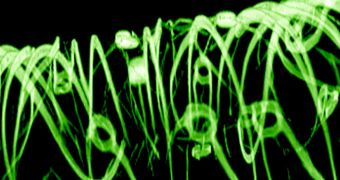A collaboration of American researchers announces that it was recently able to introduce a new function into the scaffolds used to create the 3D shape of engineered tissues. The addition could enable scientists to get feedback on how the cells are developing, and guide their development accordingly.
The aforementioned scaffolds are used for a variety of applications in biotechnology, including growing new organs. A new heart can be obtained by taking the heart of a pig, cleaning it of cells, and using the remaining cellular scaffolding as a support for human stem cells.
What happens inside the sponge-like structure has long since been a mystery to researchers, as they were never able to develop a technique that enabled real-time observations of how the new tissues are developing. The new approach brings this goal to reality.
In addition to biotechnology, the capability could from now on be used in drug research. Experts with pharmaceutical companies will be able to monitor how patients or test animals in the lab react to various chemicals or drug combinations.
The researchers behind the new work say that they were able to use silicon nanowires to create electronic sensors, which were then successfully introduced into cellular scaffolding. The devices appear to be capable of controlling drug release times, too.
Scientists from the Massachusetts Institute of Technology (MIT), Harvard University and Boston Children’s Hospital publish details of their device in the August 26 online issue of the top scientific journal Nature Materials.
The MIT David H. Koch institute Professor, Robert Langer, was the senior author of the new paper. “We are very excited about this study. It brings us one step closer to someday creating a tissue-engineered heart, and it shows how novel nanomaterials can play a role in this field,” he explains.
“The scaffold is not just a mechanical support for cells, it contains multiple sensors. We seed cells into the scaffold and eventually it becomes a 3-D engineered tissue,” says former MIT postdoctoral researcher Bozhi Tian, also one of the lead authors on the paper.
Thus far, the new scaffolds have been used to grow cardiac, neural and muscle tissues, but the team believes that other types of cells can be used as well. More studies are planned in order to determine the limits of the new sensors, as well as ways to improve them.

 14 DAY TRIAL //
14 DAY TRIAL //